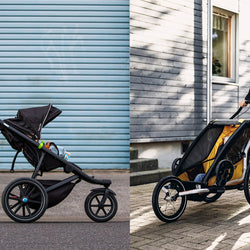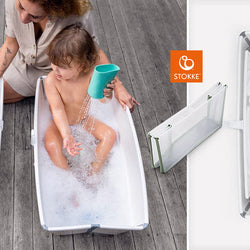Newborn Breastfeeding Basics

by Annie Wiesman
Aug 04, 2020
Most women assume newborn breastfeeding basics are just that: BASIC. How much is there to know? It should be as simple as 3 steps: give birth to baby, put baby to breast, baby nurses easily.
Unfortunately, it's not always that simple.
Breastfeeding did not come easily for me at first. Due to various complications, the first 6-8 weeks were painful and filled with some angst.
I don't say this to scare you, but to prepare you for some possible anxiety. But I also want to encourage you to take a deep breath and relax your shoulders. It may take some time and perseverance, but you can do this.
Article Continues Below Advertisement
Newborn Breastfeeding Basics
Two things to get you started…
You will want a comfortable spot to nurse, which might include a cozy chair, nursing pillow, bottle of water and a good book. We've also compiled a list of breastfeeding must-haves you'll definitely want to check out.
As a first time mom, you may also want some sort of tracking system to log all the basic information: eating, sleeping, and diapering. I used an elaborate spreadsheet, but I found a few apps that you might find helpful.
Breastfeeding Apps
1. Baby Tracker
- Extensive tracking of feeding, diapering and sleep schedules
- Keeps track of growth, milestones and health history
- Data interpretation, data sync, and auto backup
- Price: $4.99
- Compatibility: iPhone, Android
2. Baby Feeding Log
Article Continues Below Advertisement
- Simple and easy to use
- Logs breastfeeding or bottle feeding, diaper changes and sleep schedules
- Price: Free on iTunes
- Compatibility: iPhone, iPad
3. Eat Sleep – Simple Baby Tracking
- Tracks eating, sleeping, and diapering
- View trends
- Price: Free on iTunes
- Compatibility: iPhone, iPad, iTouch
Basic breastfeeding techniques…
- Hold your baby with his tummy toward yours.
- Hold your breast with your thumb on top and your fingers underneath in a "C" position.
- Gently tickle the baby's lower lip with the nipple until he opens his mouth wide.
- Don't lean over to your baby, but pull him to your breast, keeping him in the tummy-to-tummy position.
- Make sure the baby latches on the entire nipple and most of the areola. You'll know you have a proper latch when the baby's chin and bottom lip are touching your breast and the nose is free. Baby's lips should be flared outward.
- If baby is suckling, you'll see a rhythmic suck-swallow-breath pattern. You'll also notice the baby's cheek, jaw and ear moving as he feeds.
- If you feel pain, gently insert your finger into the corner of his mouth to break the suction and then try again.
- Start with alternate sides at each feeding. For example, start on the left side and finish on the right side. For the next feeding, start on the right side and finish on the left. This helps to ensure complete emptying of the breasts and equal milk production.
How long to breastfeed
It may take longer at first, but generally, an average nursing period for a newborn is around thirty minutes.
Allow baby to empty one breast fully before moving on to the other. When your baby seems ready to quit on the first side, offer the other side. You'll know baby's done when he unlatches.
Try your best to keep baby awake to give a full feeding. I often had to give my little one a gentle massage or tickle on her feet to keep her eating.
Article Continues Below Advertisement
How often to breastfeed
According to On Becoming Babywise, "the first general rule is to always feed a hungry baby." Typically, for the first few weeks, that will mean feeding every 2 ½ – 3 hours. The best way to measure that time is from the beginning of one feeding to the beginning of the next. That means you will be feeding your newborn 8-10 times in a 24 hour period.
On Becoming Babywise is a great resource to help you set up your "Parent-Directed Feeding" schedule. It will give you "enough structure to bring security and order to baby's world, yet enough flexibility to give you the freedom to respond to any need at any time."
Annie Wiesman
Annie Wiesman is the co-author of “Education Begins at Birth: A Parent’s Guide to Preparing Infants, Toddlers, and Preschoolers for Kindergarten.” She is a former kindergarten teacher turned stay-at-home mom who enjoys traveling, hiking in the mountains, and creating memories together with her husband and little girl.






